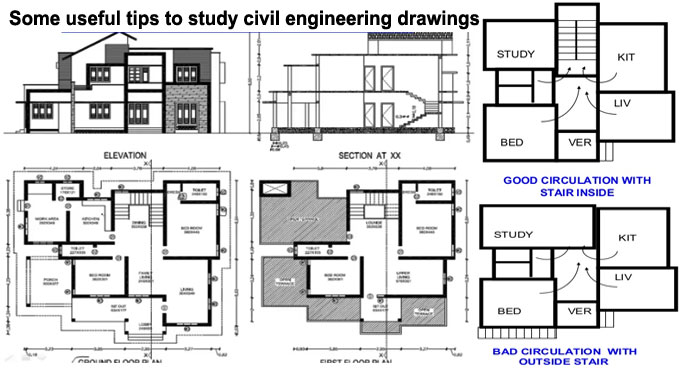
How to Study Civil Engineering Drawings
The first step in any construction project is to prepare a visual plan for the building. This is called the drawing, a visual representation of the project with dimensions and appropriations so that civil engineers can understand what the architect actually wants them to build.
To make sure there is no misinterpretations, one needs to follow some basic steps to understand the drawing. Here is a brief guide on how to study civil engineering drawings.
Familiarize the Scale
You have to understand exactly how large the objects are going to be in real life from the drawing itself. In a civil engineering drawing, the scale is maintained religiously all throughout the documents.
Generally the scale is 1/4th or 1/8th, but there may be other variations as well. Sometimes one set of plans may contain different scales on different pages if they need to depict very large and small objects at once.
You must be able to understand at a glance the real scale of the object from the drawings.
Decode the Symbology
The architect or the engineer who has prepared the drawings may have used custom symbols in the plans. Make sure you understand all of them so as not to make a mistake. The same goes for abbreviations which are used A LOT in engineering drawings. Make sure you don?t misinterpret one thing for another.
Note the Circled Numbers
A circled number generally means that this part of the plan is shown in greater detail in another drawing. You should make the right connections between those pages and the circled numbers to properly understand what goes where.
Consult Colleagues
Two heads are better than one and many hands make short work.
Don?t be shy of asking help from other engineers; especially from those who have worked with similar drawings before and/or worked with the same planner before.


